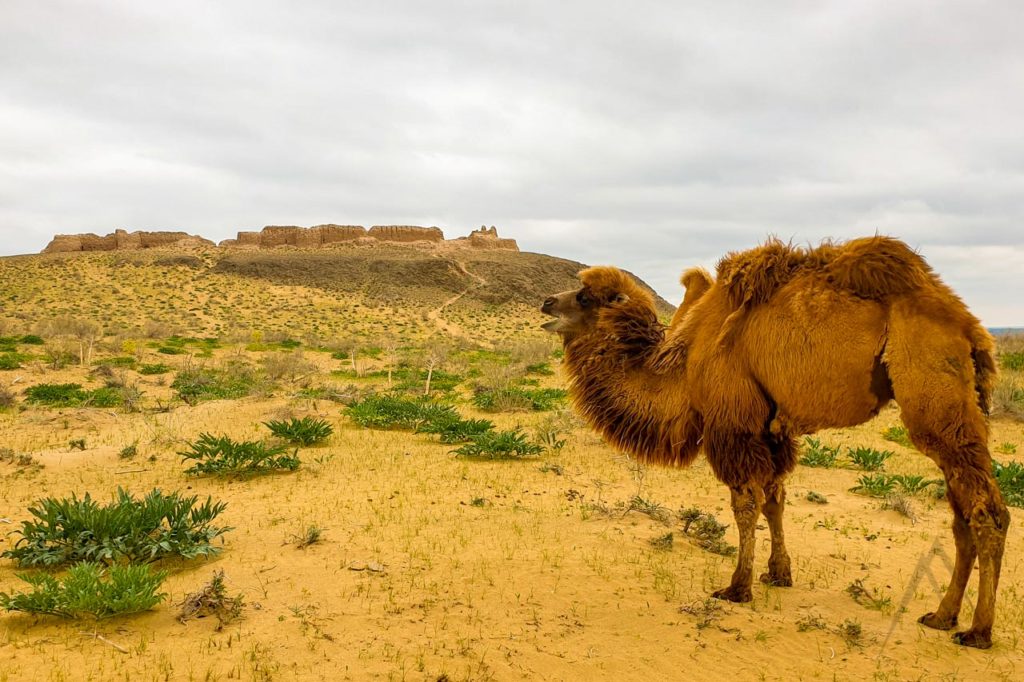Khorezm
Khorezm
Khorezm can be written in numerous ways like Kwarazm, Chorasmia, Khwarazm, Horezm and many more. Khorezm is a vast fertile oasis area on the Amu Darya river delta in western Central Asia, bordered by the former Aral Sea from north, the Kyzyl Kum desert from east, the Karakum desert from west and by the Ustyurt Plateau (Kazakhstan) from west. This area was once the hub of the Persian (Iranic) Khwarazmian civilization and numerous kingdoms of the Khwarazmian and Afrighid dynasty, whose capitals included Kath, Gurganj (the modern day Konye-Urgench) and from the 16th century onwards, also Khiva.
Now the former Khorezm area is shared by Uzbekistan and Turkmenistan. Archaeological excavations show that that the earliest developed building layers from the cities in the area are connected to the 3rd and even earlier centuries BC. The best signs of the ancient cultures in this area are the hundreds ruins of clay-built kalas (fortresses) spread around in the desert both sides of Amu Darya.


History of Khorezm
Khoresm has been the stage for numerous battles and fights starting from the Alexander the Great and the Arabian army. Under the command of Kuteyb ibn-Muslim, his army invaded Gurgandzh (the former capital of Khoresm) in 680 AD, but they were not permanently able to overcome the land for any length of time. Some centuries later, Genghis Khan’s united army rushed into the capital of the powerful state of Khoresmshah-Anushtegenids – Gurgandzh after a year-long siege having first destroyed the dams on the Amu Darya River which resulted in the river rushing into the city and practically washing it from the face of the earth. It took about 200 years for the capital of Khoresm to revive from this attack.
Between the 9th and 12th centuries, Khoresm was the home of some Muslim educational institutions and large centers of science teaching at least astronomy, mathematics, medicine and chemistry. The most popular was the Mamun Academy of Khoresm, which recently celebrated its 1000th anniversary, joined by the world community under the aegis of UNESCO. Muhammad-al-Khoresmi’s fundamental works in mathematics, geography, and geodesy were already known in Europe by the 9th century. Al-Biruni, Agakhi, Nadzhmiddin Kubro and other scientists and seminary students, whose names are also connected with Khoresm, have left a rich, scientific and cultural heritage.
Amir Timur pursued five campaigns in Khoresm in the 14th century but managed to win it completely only by 1388. Khoresm also blossomed under the Timurid era and for a short period became one of the most important spiritual centers of the Muslim world. After Khiva’s khanate was formed at the beginning of the 16th century, Khiva became its capital in 1598. A major feature of modern Khiva is defined by the architecture of the Khivan khanate from the end of the 17th century until the beginning of the 20th century. Khiva is by far the best preserved entirety of the Khorezm era.
The historic heart of Khiva has been so well preserved that it’s sometimes criticized as lifeless ‘museum city’. To walk through the walls and catch that first glimpse of the fabled Ichon-Qala (inner walled city) in all its mud-walled glory is like stepping into another era. History is just a sniff away here. The architectural monuments of Khiva are of unique value to the world.
In the list of values of universal importance, Khoresm occupies a special place, as one of the centers of world civilization and an important center on the Great Silk Road. The city of Khiva was one of the first ones in Central Asia to be added to the UNESCO list as a place of the world heritage of mankind in 1990. Khiva celebrated its 2500th anniversary under the aegis of UNESCO in 1997. If you are interested, you can also check the other UNESCO sights in Central Asia.


Khoresm sights
We have collected the best destinations & sights to learn and observe the Khoresm history in the map below. Easiest place to see the fortresses and other monuments is around Khiva and Urgench and along the Amu Darya, all the way to Nukus in Karakalpakstan. As said, there are hundreds of fortress ruins along the Amu Darya and most of them can be freely explored. One can easily find more just by looking at aerial images.
Khorezm destinations
Page updated 16.1.2021